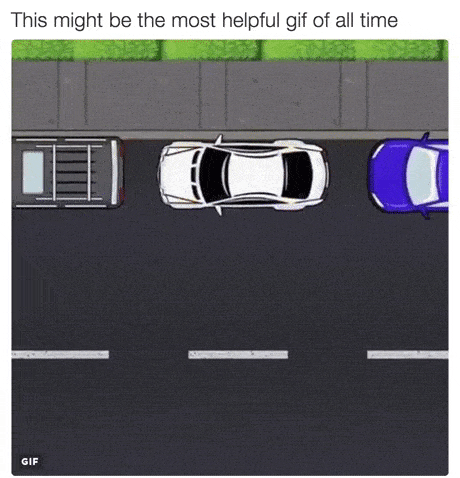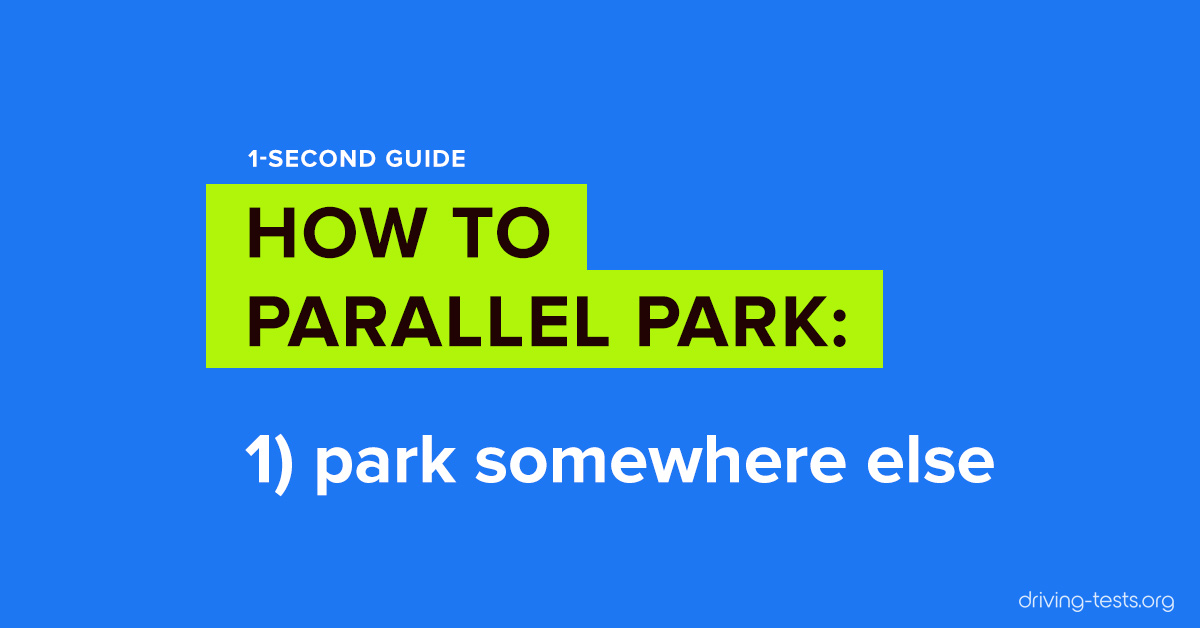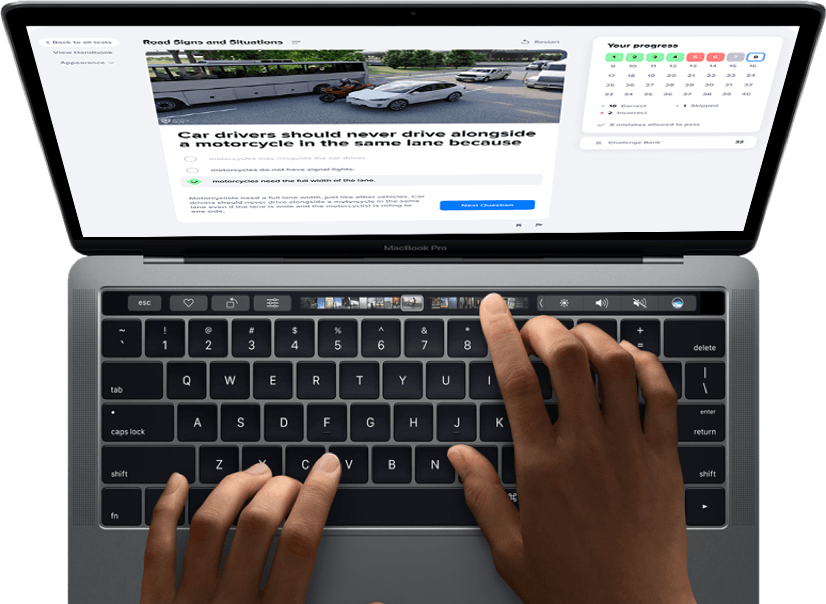Parallel parking involves positioning a vehicle parallel to the road and between two parked cars, a task that often causes anxiety for many drivers. This skill requires practice to master, and expert advice and safety tips can be invaluable for those attempting it for the first time. This guide will provide you with parallel parking tips and a step-by-step approach to master this essential driving skill.
Here's a video we made that explains the steps on how to parallel park for beginners:
Once you're done with the video above, make sure to try this interactive parallel parking simulator below before hitting the road: click #1 in the image.
Congratulations!
You are now a parallel park master.
Many drivers go to great lengths to avoid having to parallel park. While parallel parking is a little tricky and takes some practice to master, there is no reason to be nervous about this driving skill. Depending on where you live, you may be required to demonstrate your ability to do parallel parking during your driver license examination. Practice your skills before your road test or before you are required to parallel park on a busy roadway. Place two plastic cones or other objects approximately fifteen feet apart to simulate the standard size of this type of parking space. Use the following directions as a guide for practicing parallel parking for the first time.
Note: If you are practicing in a simulated parking space or an empty parking lot, assume that you are maneuvering around two other cars. Here are the easy steps to be successful at parallel parking.
Parallel Parking Steps

Follow these steps to proper parallel parking
- 1
Step 1: Position your vehicle
Start by aligning your car parallel to the vehicle parked in front of the open space, approximately two to three feet from the side.
- 2
Step 2: Check your mirrors
Before making any moves, ensure your rearview and side mirrors are properly adjusted. Then, check all mirrors and your blind spots for other vehicles, pedestrians, and obstacles. Ensure no traffic is coming from behind, and you're aware of your surroundings. Once you are certain that there are no other vehicles in your blind spot, shift your car into reverse.
- 3
Step 3: Start backing up
Put your car in reverse and start backing up slowly. Begin steering your wheel to the right.
- 4
Step 4: Straighten the steering wheel
As your car moves into the empty parallel parking spot, slowly straighten your steering wheel as you continue to move backwards towards the parked car at the other end of the parking space. As you are maneuvering your vehicle, continuously check all mirrors and through your windows and front windshield to ensure you are not in danger of hitting either of the vehicles bordering the parallel parking space.
- 5
Step 5: Begin turning your steering wheel to the left
Once the front of your vehicle has passed the back bumper of the vehicle in the parking spot in front of you, begin to turn your steering wheel to the left.
- 6
Step 6: Check how close you are
Continuing to inch backwards in reverse and while beginning to straighten your steering wheel, look into your rear view mirror to see how close your vehicle is to the car in the parallel parking spot behind you.
- 7
Step 7: Adjust your position
Once you have your vehicle straight and as close to the curb as possible, you may need to shift into forward to position your car so that there is an equal amount of space in front and behind your vehicle.
- 8
Step 8: Don't forget to pay before you leave
Many parallel parking spaces are assigned a parking meter. This is particularly true in major metropolitan areas. Make sure that you remember to feed coins into your parking meter after you parallel park your car.
- 9
Step 9: Put the car into reverse
To exit a parallel park, first put your car into reverse and back towards the car behind you. Back as close as you reasonably can without putting yourself in danger of hitting the other vehicle.
- q
Step 10: Turn your steering wheel to the left
Next, turn your steering wheel to the left and shift your car into forward. Check for traffic in the lane you are about to enter. Making sure that you are not too close to the back bumper of the vehicle parked in front of you, slowly drive out of the parallel park.
The ability to perform parallel parking is an extremely useful driving skill.
Being confident in your ability to parallel park with ease will save you from having to search for a regular parking space in which to place your vehicle. With a few tries, you should be able to get the feel of parallel parking and impress your driving instructor.
Additional Tips
- Parallel Parking with Cones: If you're learning how to parallel park, practicing with cones can be a great start. Set up cones to represent the dimensions of a typical parking space and practice maneuvering between them.
- Dimensions and Distance: Understanding the typical dimensions of parallel parking spaces and maintaining a proper distance from other cars is crucial. Most spaces will be about 20 feet long.
- Parallel Parking Tips for Driver's Test: If you're preparing for a driving test, practice parallel parking as it's often included in the test. Remember to use your mirrors and signal appropriately.
- Practicing Parallel Parking: Look for quiet streets or empty parking lots to practice. This will help you get a feel for the size of your car and the space needed to park comfortably.
- Teaching Parallel Parking: If you're instructing someone, start with the basics of positioning and steering. Gradually introduce them to busier environments.
FAQ
- What is the first thing you must do when parallel parking? The first step is to position your car parallel to the car parked in front of the empty space, maintaining a 2-3 feet distance.
- How to set up cones for parallel parking practice? Place cones to mimic the dimensions of a standard parking space, about 20 feet in length, and practice maneuvering between them.
- Where can I practice parallel parking? Practice in a quiet street or an empty parking lot to start with, then gradually move to busier areas.
Conclusion
Parallel parking may seem challenging at first, but with practice, it becomes a straightforward task. Remember these tips and steps, and you'll find yourself parallel parking with ease, whether it's for your daily commute, a driver's test, or teaching a new driver.





